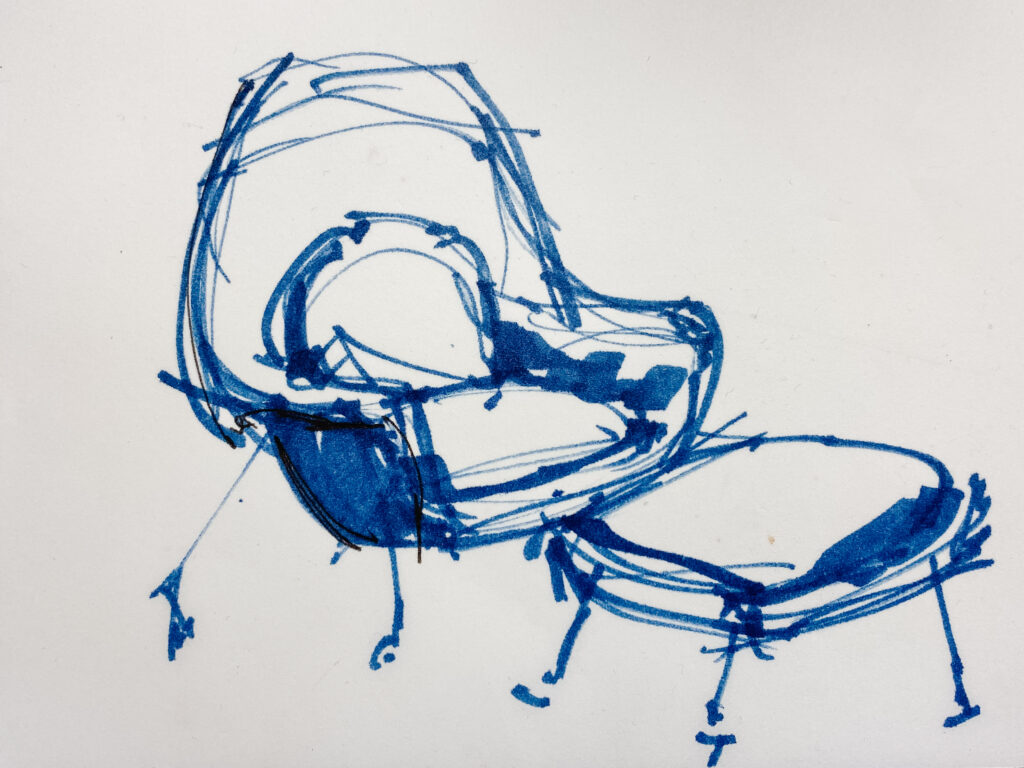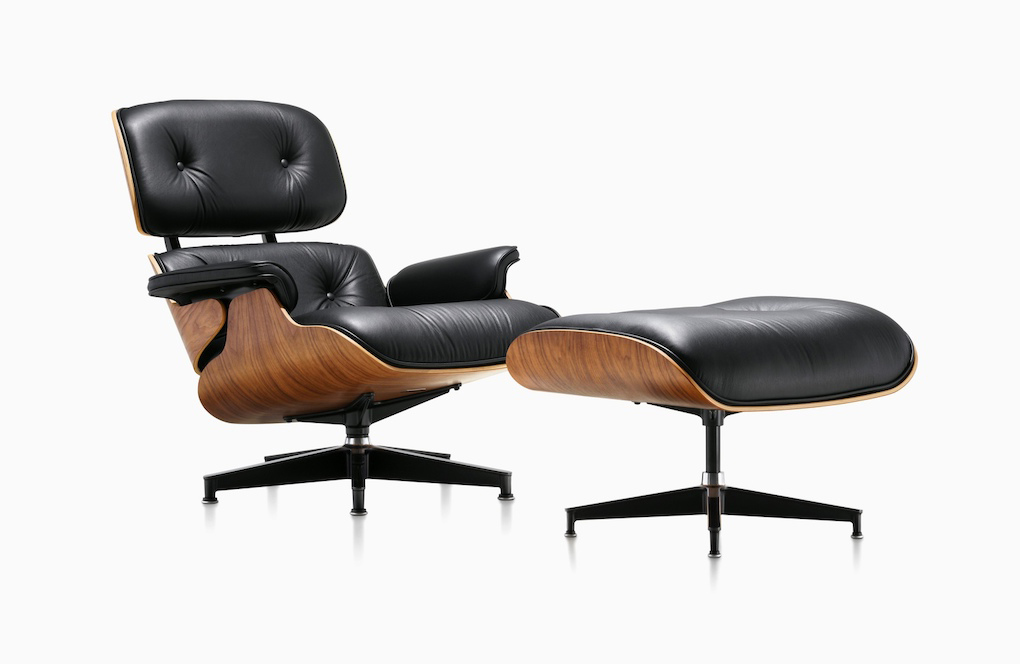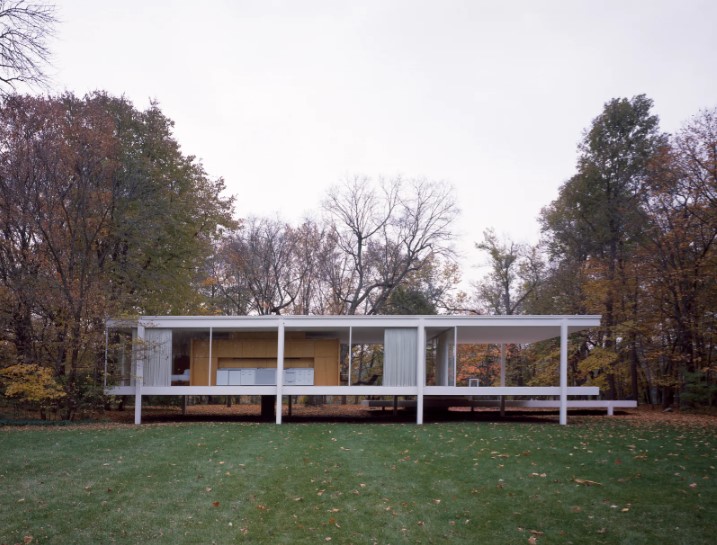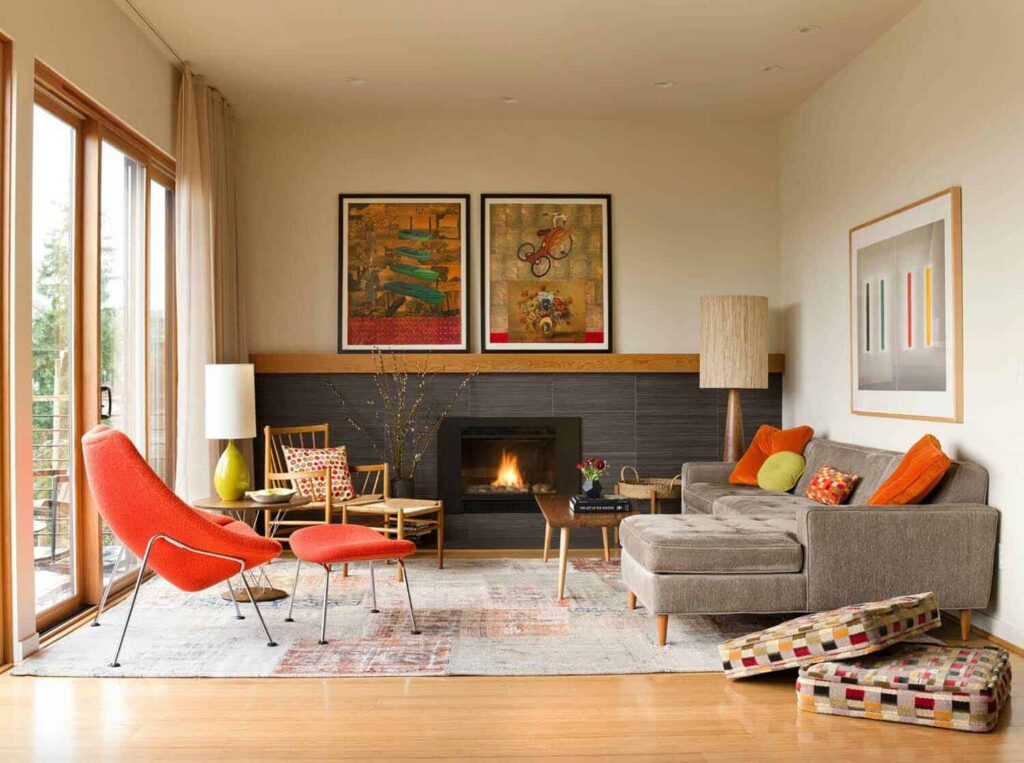Mid-Century Modern has been a favorite of mine for many years. I was in love with Mid-Century Modern way before it became popular. To be fair, so were most of my interior design classmates in the late 90’s. We were definitely enamored with the likes of Charles Eames, Eero Saarinen, and Arne Jacobsen. I was (am!) a total sucker for the clean lines, playful shapes and inventive material use that these designers were so well known for. Most homes that I design are not whole-heartedly committed to midcentury modern design, but I *love* seeing some midcentury pieces in the mix. (p.s. if mid-century design gives you heart-eyes, we need to talk! )
Mid-century Modern came about after World War II. (1950’s = midcentury) Designers and architects in post-war America were looking for ways to combine recent mass production and technology advances with an optimistic view of the future. There was a plethora of new materials available for exploration, such as steel, plywood, and plastics and designers responded accordingly with many new, creative uses for them.
Charles Eames and his wife, Ray (who was a talented designer in her own right), were perhaps some of the most the most iconic mid-century designers. They aspired for their home to be “a special refuge from the strains of modern living.” Their Lounge chair and ottoman design (pictured below) was an extension of that philosophy. The front-and-center use of plywood for the shell highlights a new material and allowed for designs that incorporated graceful, organic shapes. This dynamic duo went on to design a very impressive amount of molded plywood furniture throughout their career.
Characteristics
Flat or sloped rooflines and Floor-to-ceiling windows
The Farnsworth house, designed by Mies van der Rohe, is located in Plano, Illinois. It’s a classic example of mid century architecture. This home’s steel structure allowed for an open floor plan and large, uninterrupted planes of glass. A lot of people might feel like they were in a “fishbowl” in this home and to be honest, the only way I would feel comfortable is if it was a remote location. However, if you look closely, you can see the addition of large curtain panels that provide the privacy that you would certainly want in a home like this.
Furnishings emphasize function over ornament
Clean lines and organic shapes were the name of the game during the mid-century design scene. I’m sharing my sketch of one of my favorite modern classics, the Womb Chair – 1948. Eero Saarinen designed the groundbreaking Womb Chair at Florence Knoll’s request for “a chair that was like a basket full of pillows – something she could really curl up in.” This mid-century classic supports countless positions and offers a comforting oasis of calm—hence the name.

Mixed Materials and Bold Accent Colors
Walnut, teak, rosewood, and oak were popular wood species in mid-century interiors. Wood was often also mixed with metal, glass, and vinyl in bold accent colors like reds, yellow, pink and pale green. Color was a powerful tool for expressing optimism post-war. Used sparingly, these bold colors were just what was needed to inject life into spaces that might otherwise feel a bit too cold and sparse for most people.
Historic Homes Recap
This Historic Homes series has by no means an exhaustive list. It’s been more like tip of the iceberg. I’ve enjoyed brushing up on these styles and hopefully you enjoyed the series too! If you’d like to review, you can revisit the entire collection here!
Historic Homes Part 1: Colonial Style
Historic Homes Part 2: Romantic Style
Historic Homes Part 3: Victorian Style
Historic Homes Part 4: Tudor Homes


